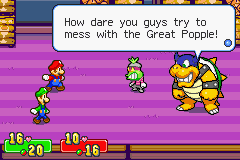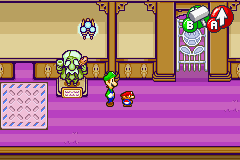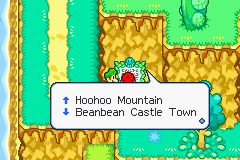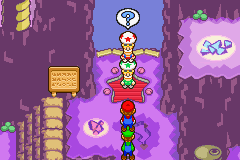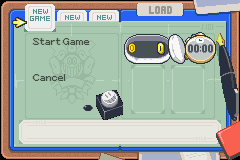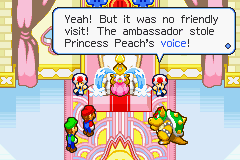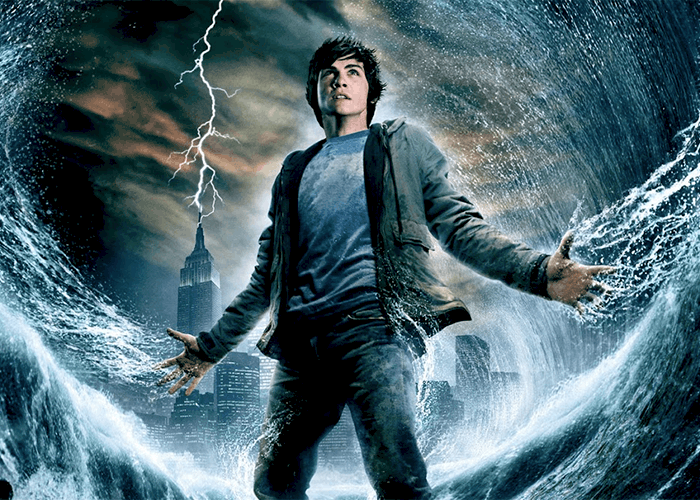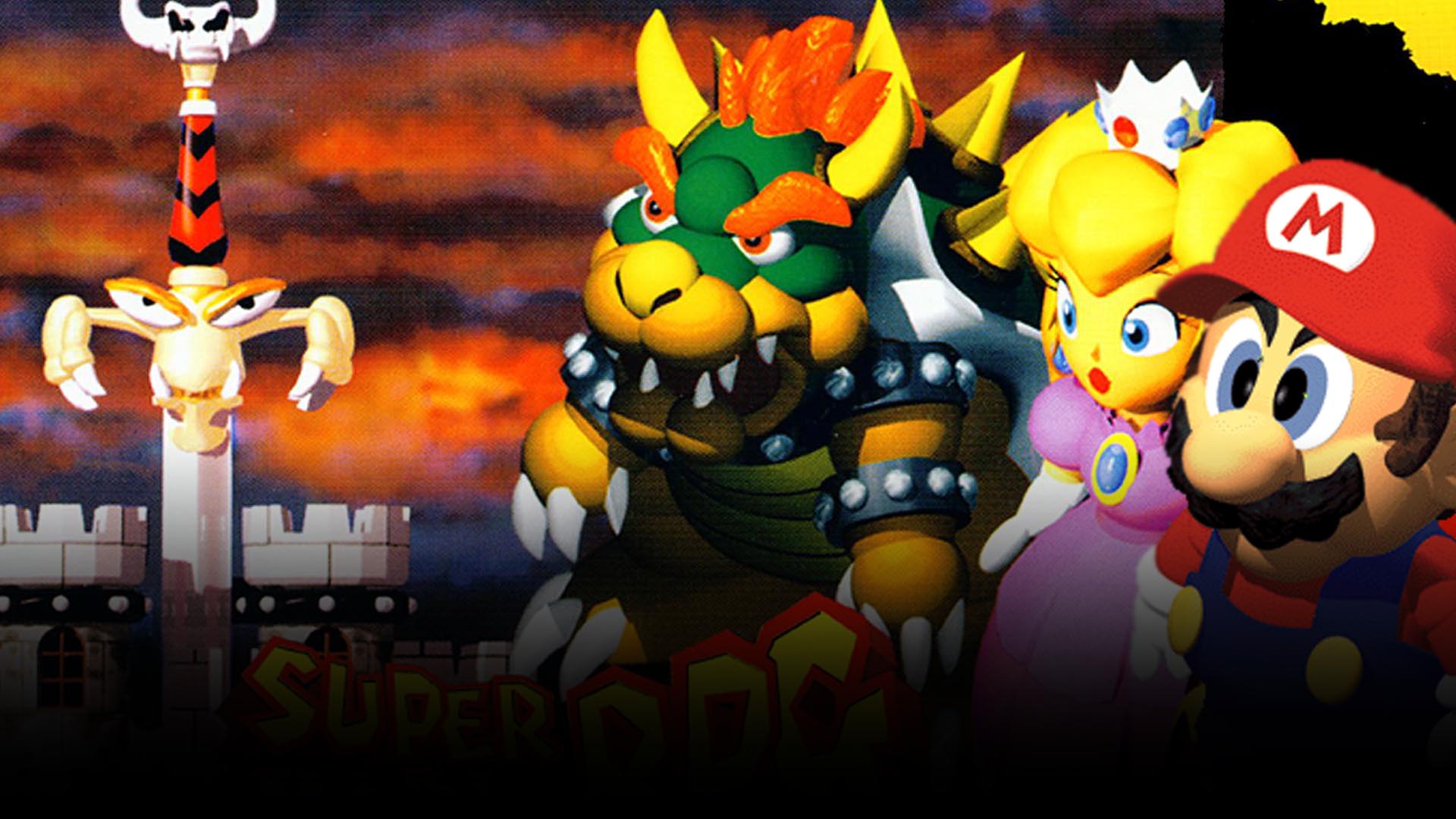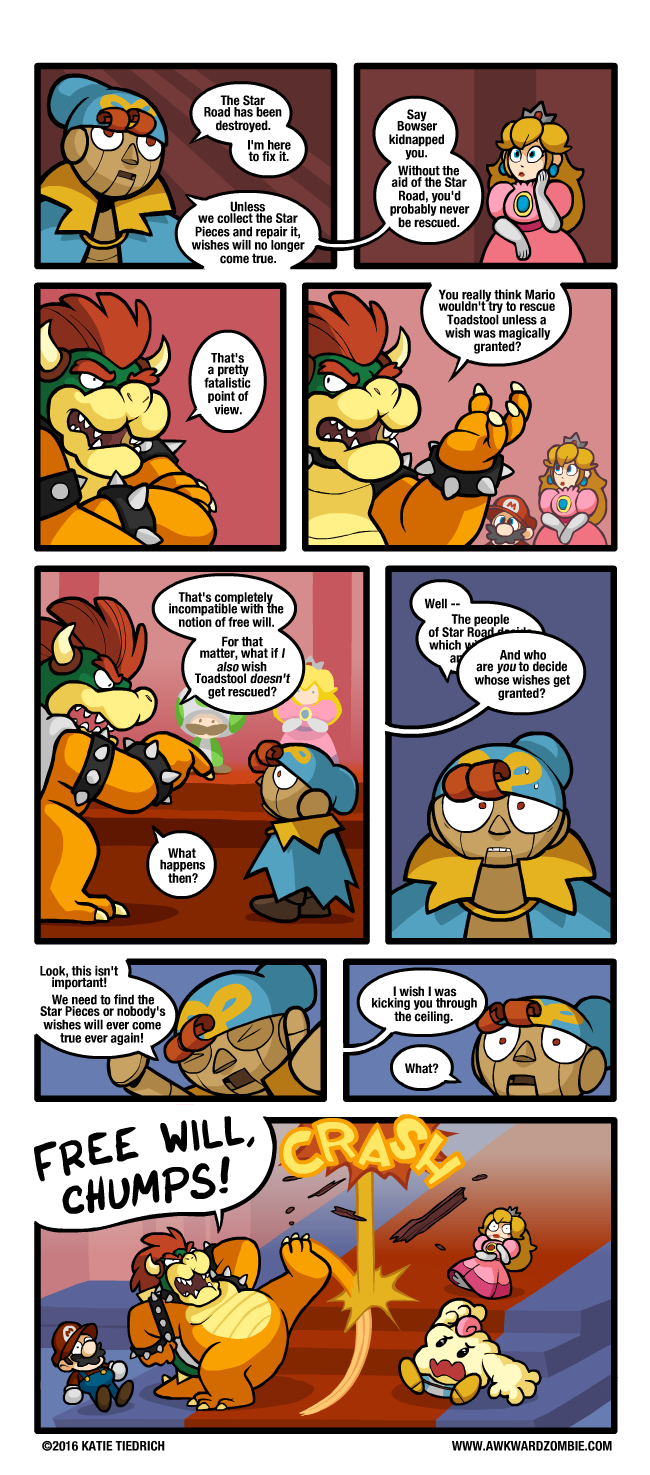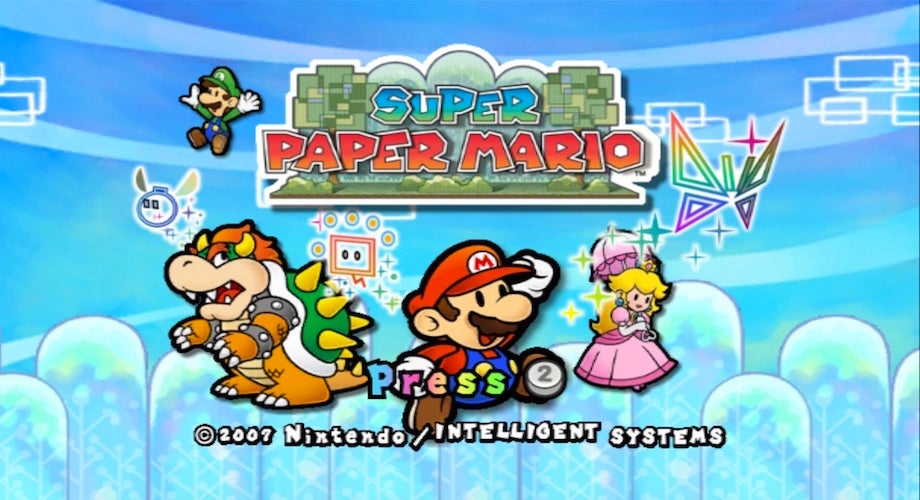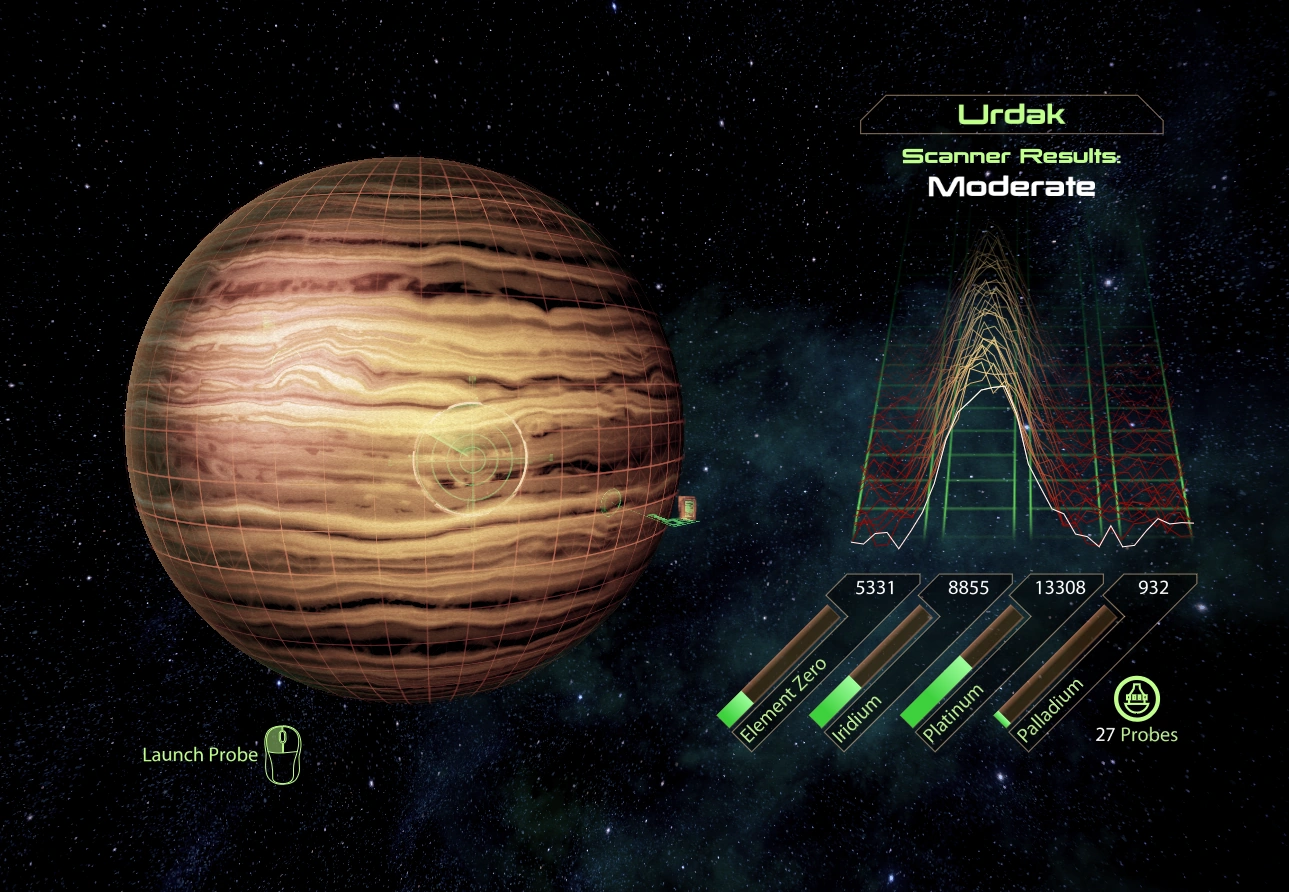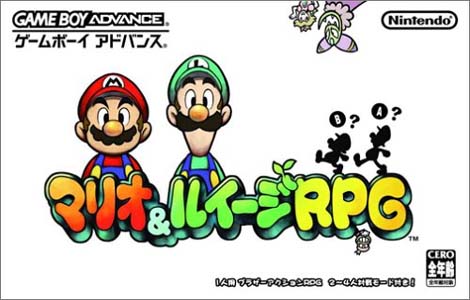Once clearing the three-part-tree’s fetch quest, which is a fairly simple puzzle-gauntlet, we face down the final boss of the area; a sentient soda monster.




This boss has some esoteric damage properties that I’m not going to go into in-depth right now; suffice to say, it’s easier to hurt if you use your new team-up attacks. Hope you’ve been practicing those on the random enemies in this level. If I was designing this, I would have made THIS one the spiky boss that couldn’t be jumped on, if I was insistent on testing the player’s mastery of hammer-oriented bro’s moves.
Beating the boss transitions into a section where former Chateau owner Bubbles breaks open the floor underneath us and separates the Mario brothers, leading to a Luigi-only section. And this is an objectively bad piece of game design.

On one hand, I kind of get it. This game fleshes out Luigi’s character like no other game — even more than Luigi’s Mansion, if you ask me. It posits his cowardice and struggle to live up to Mario not only as a part of his character, but as an interactive piece of his struggle; and very little else of Mario canon exemplifies this better than these Luigi-only parts of Superstar Saga.
On the other hand, these sections run headlong into the game’s basic mechanical foundations in an absurdly frustrating way.
Until now, the brothers have never been separated for an extensive amount of time, and, as we’ve discussed previously, the A button has controlled the primary character and the B button has controlled the secondary. In battle, A is the Mario button and B is the Luigi button.
However, when Luigi is solo, the button that controls the character on the field (A) is the wrong button to control him in combat (B).


And yes, I am a grown-ass man as of this writing who can handle this small amount of cognitive dissonance. But revisiting this section, even over 10 years later, brought back memories of missing action commands and dodges that should have been easy, because I’d pressed the wrong button. The fact of the matter is that this is a smack in the face to the muscle memory that the player has been building for what my save tells me has been nearly 3 hours.
This solo-Luigi stuff is completely unprecedented. As much as I hate to admit it, as much as I love this game, this Luigi-only section is a horrible trolley-problem of game design, where converging disaster factors come together to an inevitable, tragic conclusion.
At least it’s short.
When the plot reconvenes, we do a small QTE that is at least consistent with internal mechanics;


And by curing the queen, manage to cure the whole town. That’s an idyllic authoritarian community for you.
There’s a bit of a lore dump here that breaks down the stakes of the villain’s plot here, in case you haven’t caught on;



Ok, so the basics of Cackletta’s plot have been laid out. She stole Princess Peach’s voice, and then she stole the Beanstar, so the game plan is to activate the latter with the former and, by doing so, achieve… whatever you need. Plotwise, this is fine. It doesn’t matter what Cackletta wants; she’s clearly a Bad Dude and has the means to accomplish her goals, so barring a major plot twist, it’s the Good Guys’ goal to stop her. This is fine, as far as RPG plot structure goes.
I have to wonder, though, why the god of the Mario universe keeps making all the omnipotent artifacts in the shape of stars? Clearly the bad people have caught onto the trend. Maybe that’s why the Mario Odyssey plot coupons are “moons?”
In any case, a quick reunion with the bishonen-parody-prince highlights our next destination.

But this is also our chance to explore the reinvigorated town, so let’s take a brief respite from the plot to do this. SPOILER ALERT: If you don’t fuck around in the town now, you’ll have to wait a frustratingly long time to do so again.
The town gives you two collection quests to encourage you to screw around here for maybe a little bit longer than a pair of heroes given mandate should;


This pair of fetch quests totals 15 nonsense items to locate within the castle town limits; neither quest rewards you with anything particularly consequential (to my knowledge; I didn’t do either of them this playthrough, since I’ve completed each multiple times in the past), but they do give you an excuse to familiarize yourself with the town’s geography and get to know all the residents. It’s a deceptively organic way of forcing the player to engage with civvies and get them attached to such.
One last thing to discuss about the town; the coffee shop.

This coffee shop is how you get permanent stat-boosters in this game. It’s a needlessly complex system. How it works is:

You need a certain amount of these beans before you can make a coffee that will give you a stat boost.
The problem is that at least two of these bean types are flat-limited in the amount that exist in the world. Each bean can only be accumulated in one way; Green via battles with compatible enemies, yellow via minigames, red via those digging spots we discussed in entry 7, and brown via straight-up INVISIBLE BLOCKS.
If you haven’t caught on yet, the obvious implications of this are that there are a set number of red and brown beans that exist in the game’s world. You can earn more via a very, very specific minigame that only opens up in the late-game.. but only one at a time.
Furthermore, you can get a special equippable item for mixing each of these coffees once; the following screenshot is not mine, because the playthrough I’ve been doing for this retrospective has been pretty haphazard.
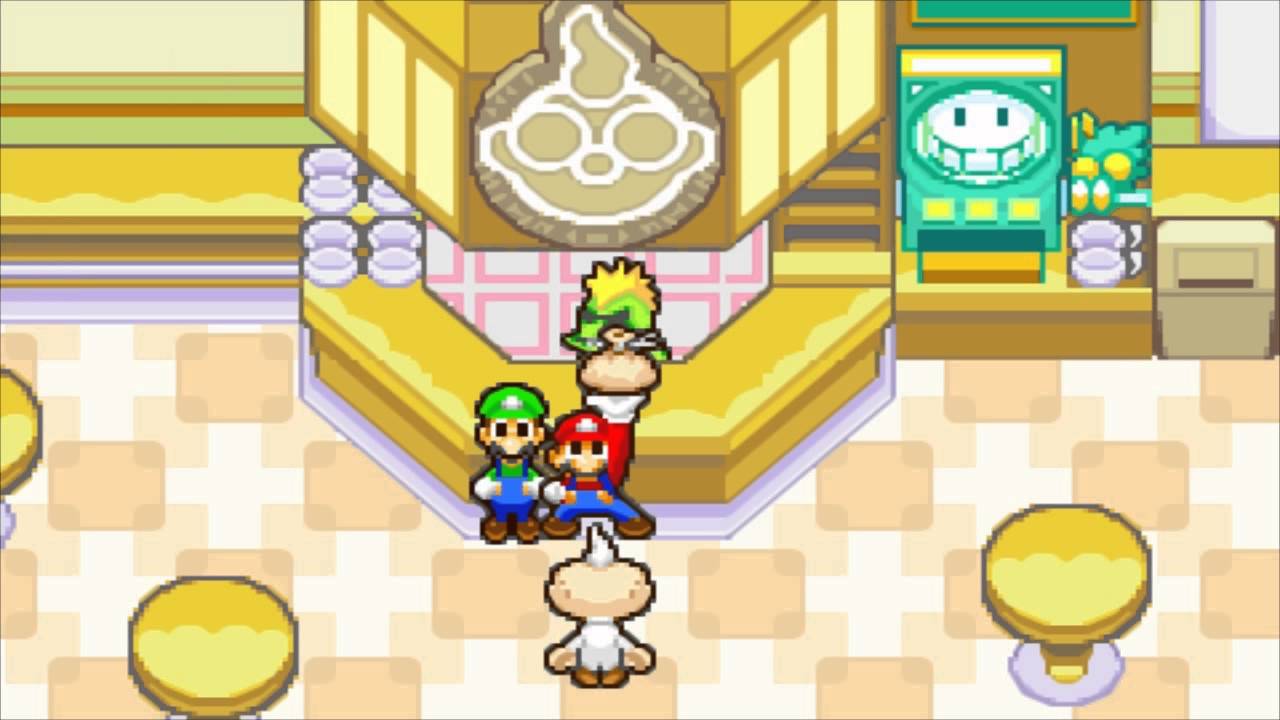
Frankly (HA), I think this is all needlessly complicated. The Bowser’s Inside Story approach to beans was far superior. But I guess we’ll get to that whenever we get to that.
I’m tired. I wrote this very last-minute. Hope this gives you some insights into my thoughts on this game, assuming you care about this game.
Ah jeezus
Christ
I need some sleep.
~Hans


